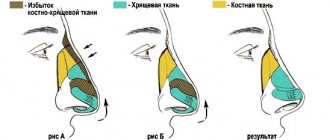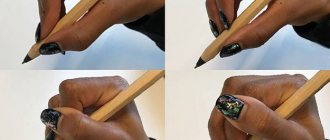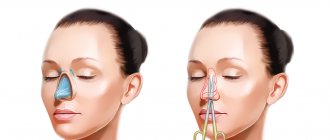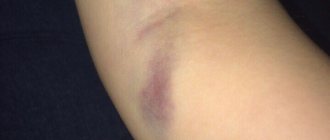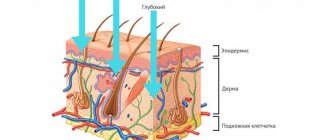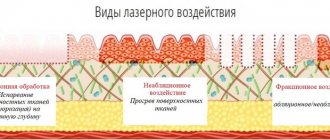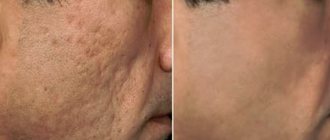Modern medicine has specialized technologies that allow the patient to avoid discomfort after septoplasty and breathe through the nose.
Author:
- Gadzhiev Kamran Rafikovich
otolaryngologist, rhinosurgeon
4.42 (Votes: 26)
- Nose pain
The most common pathology of the ENT organs is a deviated nasal septum. No one thinks that even the slightest curvature can cause serious diseases, such as sinusitis, nasal polyps. Why is this happening? When the ENT organs are healthy, only clean and warm air enters the lower respiratory tract, since it is warmed and disinfected in the nasal cavity. With a deviated nasal septum, these functions are disrupted due to the fact that the air stream hits the curvature of the septum.
Correction of a deviated nasal septum is called septoplasty. This operation helps the patient return to normal and natural breathing. But, unfortunately, many patients try to avoid it and continue to live with a deviated septum, which leads to complications in the future. What worries people before surgery:
- How to breathe through your nose after surgery?
- will tampons be placed in the nose?
- How long will I need to stay in the hospital after the operation?
These questions stop the patient from making the decision to undergo surgery.
How is rehabilitation after septoplasty?
With the development of technology, septoplasty has ceased to be uncomfortable. The operation begins with the patient being given anesthesia, then the doctor uses an endoscope, through a small incision, to enter between the layers of the mucous membrane and straighten the septum.
During the rehabilitation period, technologies were also created that allow the patient to avoid unpleasant sensations and breathe through the nose. Intranasal septal splints according to Reiter or splints were created. They are made of soft silicone, as it does not cause any harm to the nasal cavity and is painlessly removed from it. The splints have a seven-sided shape, which completely follows the shape of the nasal septum at the site of the operation. The essence of splints is that they keep the septum in the midline. After the operation, while the patient is under anesthesia, a silicone splint is sewn on.
Splints come in different modifications. Depending on the shape of the nose, they can be either large or small. A tube can also be inserted between the silicone of the splint, through which the patient can breathe immediately after the operation. The septal splint stays in the nose for about 5-7 days, during which time the nasal septum takes its position.
Is it worth getting rhinoplasty?
The most reasonable decision about rhinoplasty is surgery for medical reasons. There are nasal defects in which breathing is difficult, which negatively affects the general physical condition of a person. It is worth noting that women most often decide to undergo surgery for aesthetic reasons, relying on their appearance. Rhinoplasty for men is often a balanced decision aimed at eliminating nasal defects that interfere with normal life activities.
Important! In almost all cases, it will be impossible to return the original shape of the nose. Therefore, weigh your decision several times. Is it not dictated by the desire to be like your idol?
Septal splints
Recently, septal splints or intranasal splints have become an integral part of operations on the nasal septum. For septoplasty, rhinoseptoplasty and closure of perforations of the nasal septum, the final stage of the operation is the installation of septal splints on both sides of the nasal septum.
The reason splints are so popular among surgeons is a number of advantages that improve the outcome of the operation, reduce the risks of postoperative complications and speed up the patient’s recovery.
The advantages of septal splints are reflected in the table
| Traditional septoplasty method | Septoplasty using septal splints | |
| Nasal discharge | After the operation, the mucous discharge in the nose and the remaining blood dry up. Crusts form in the nasal cavity, which adhere to the nasal mucosa and are difficult to remove. They also impair breathing and cause severe discomfort in the patient in the postoperative period. | Septal splints cover the entire mucous membrane of the nasal septum and prevent the formation of crusts on the mucous membrane of the nasal septum. And due to the fact that they are made of silicone, all the pathological contents in the nose do not find adhesion and are easily washed off with a nasal shower. |
| Swelling of the mucous membrane | After surgery, the nasal mucosa begins to swell and close the nasal passages due to surgical exposure. Because of this, the patient cannot breathe through his nose, he has to breathe through his mouth, and thus develops dry mouth, etc. | Silicone splints prevent the nasal mucosa from swelling and closing, as they are very flexible and quite elastic. And thanks to special channels, the patient does not have breathing problems after the operation. |
| Adhesions in the nose | Often, upon a second visit to the doctor, the patient is informed about the formation of adhesions in the nose (synechia). The reason for adhesions in the nose is that the mucous membrane of the nasal septum, due to swelling, begins to come into contact with the mucous membrane of the lateral (opposite) wall of the nose, as a result of which they stick together, and the patient faces additional surgery. | Being a barrier between mucous membranes, splints help to avoid this complication. |
| Re-displacement of the septum after surgery | High risk of displacement. | Splints, like a plaster cast, applied to a broken limb, keep the nasal septum strictly in the midline and give it additional support. Thus, splints help to avoid such complications as a secondary displaced nasal septum. |
| Nose bleed | Frequent nosebleeds. | By holding the nasal septum tightly in the midline, the splints compress the vessels and blood does not accumulate between the layers of the nasal septum mucosa. Thus, frequent complications such as nosebleeds or hematoma of the nasal septum do not occur with installed splints. |
| Tamponation | Mandatory packing. Tampons in the nose create additional discomfort. | It is possible to avoid packing of the nasal cavity. Due to this, the rehabilitation period for the patient is easier. But it should still be remembered that only the surgeon decides whether to pack the nasal cavity or not, depending on the circumstances after installing the splints. |
When the operation is prohibited
In some cases, the procedure is strictly prohibited, otherwise irreversible consequences for the body are possible. Contraindications to rhinoplasty are:
- all forms of diabetes;
- malignant tumors;
- mental system disorders;
- the presence of an inflammatory process in the body;
- chronic diseases, etc.
Postoperative period
Nose pain
Often in the postoperative period, patients experience pain in the nose. This is due both to the surgical procedure itself and to the presence of tampons in the nose. If the pain is severe, the doctor may prescribe opioid-containing narcotic painkillers such as tramadol, promedol. Most often, patients themselves refuse opioid analgesics. In this case, doctors use non-steroidal anti-inflammatory drugs: ketorol, diclofenac, analgin. However, a contraindication to these drugs is the deterioration of blood clotting and an increased risk of postoperative bleeding, so doctors do not recommend using these drugs frequently, especially in the first days after surgery.
To reduce pain after septoplasty, it is recommended to raise the head of the bed if the patient is undergoing rehabilitation in a hospital. At home, you need to lie with your head elevated, using 2-3 pillows. It is also recommended to apply ice to the bridge of the nose and forehead for 5-10 minutes 2-3 times a day.
In the postoperative period, you should not touch your nose, especially avoid pressing on the tip of the nose. This can cause severe pain and will cause poor tissue healing in the surgical area. Also, trauma to the nose after septoplasty often causes a shift of the nasal septum to the side.
Antibiotics
During the rehabilitation period, antibiotics are prescribed to reduce the risk of infection. Usually these are penicillin antibiotics. It is necessary to strictly adhere to the duration and dose of antibiotics prescribed by the doctor.
Vasoconstrictors and nasal douche
The next day after removing the tampons, you will need to use vasoconstrictor nasal drops, for example, xylometazoline, Nazivin and saline solutions for the nose (Aqua-Lor, Dolphin). Vasoconstrictors are prescribed to reduce swelling in the nose and widen the nasal passages. This improves nasal patency during nasal shower with saline solutions. Saline solutions wash away mucus, congealed blood, and crusts from the nose, speeding up recovery. On average, vasoconstrictor drops and nasal douche are prescribed for 5-7 days.
General recommendations for the patient during the postoperative period
The postoperative period lasts for 3 weeks after surgery. At this time, the main thing is to speed up the metabolism in the body, which will speed up recovery. To do this, the patient is prescribed to drink plenty of fluids - up to 3 liters of fluid per day, and moderate walking - 3-4 hours during the day. However, you should not engage in physical exercise or strain yourself - physical activity is contraindicated during the entire rehabilitation period.
Indications for aesthetic rhinoplasty
There are a number of indications for rhinoplasty. Here are the main ones:
- wide bridge of the nose;
- drooping or thick tip of the nose;
- Asian nose shape (flat)
- asymmetrical nose shape;
- a clearly protruding hump;
- improper healing after injury or fracture.
Not only rhinoplasty, but any surgical intervention on the body is always a risk. Therefore, it is important to choose an experienced plastic surgeon whom you trust and a proven clinic that has already performed hundreds of successful operations. In order to eliminate all possible risks associated with the operation, it is necessary to undergo a thorough examination and pass all the necessary tests.
Important! During the consultation, do not be afraid to ask all the questions that concern you to the surgeon; trust between the doctor and the patient directly depends on this, and, as a result, the positive result of the operation.
Anesthesia for rhinoplasty
There are three types of anesthesia during surgery:
- Local anesthesia . This anesthesia is used for minor nose correction. The drug is administered subcutaneously or applied externally. In this case, the person being operated on is conscious all the time, but does not feel pain. The maximum that can be felt is a slight discomfort during the surgeon’s work.
- Local and sedation . With this anesthesia, the patient's nose is frozen using special preparations, plus additional agents are injected that are intended for general anesthesia. The patient is also conscious and feels drowsy and calm.
- General . With this method of pain relief, the patient’s consciousness is switched off with the help of special drugs, he does not feel or understand what is happening. The advantage of this anesthesia is the surgeon’s peace of mind during the operation, but it is quite difficult for the patient to tolerate.
Psychological comfort
During the off-season, a person is especially susceptible to stress and depression. This is partly due to the fact that the summer holiday is already behind us, but it was relatively recently, which means the next one is still very far away. Rhinoplasty is an excellent reason to sit at home, take a break from routine work, and regain strength. In addition, relatives and friends in November and in the winter months will also most likely be near you and will not go on vacation. Therefore, during the recovery period you can count on their psychological support.
Atypical recommendations
- For one to two weeks after surgery, you must wear a nasal bandage made of plaster or a rhinoplasty plaster. It is prohibited to remove the bandage. She holds the nose structure until it is completely strengthened.
- For a couple of weeks you will not be able to eat food that is too cold or too hot.
- You may need to use tampons after rhinoplasty.
- You can’t blow your nose for a month or a month and a half.
- For several months you will have to stop using glasses, which can deform your nose.

